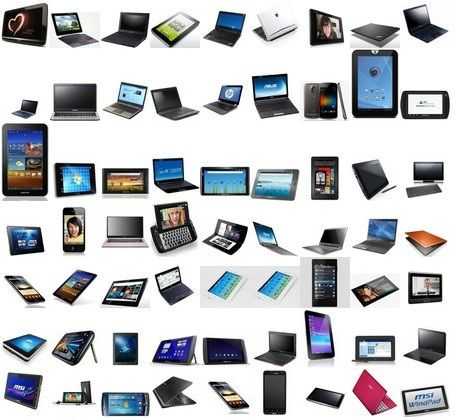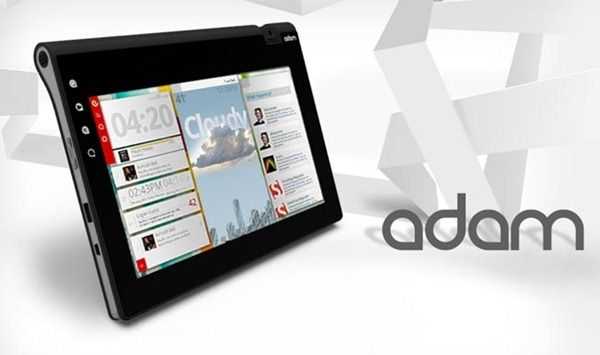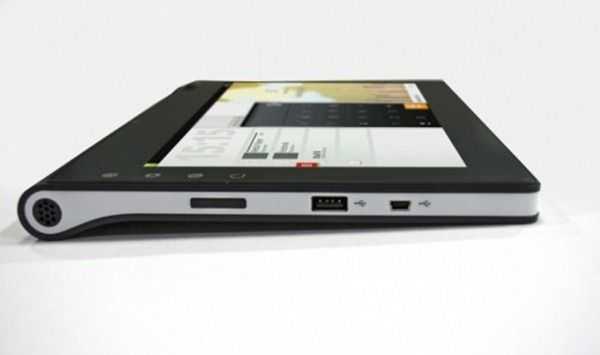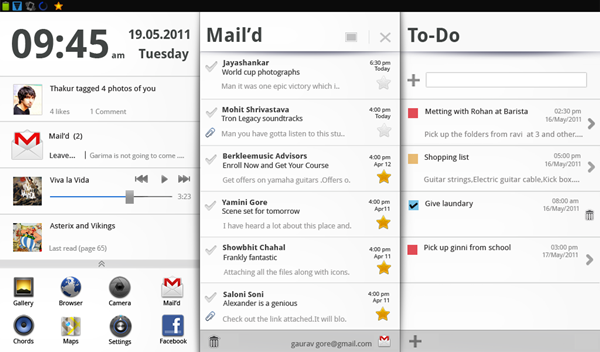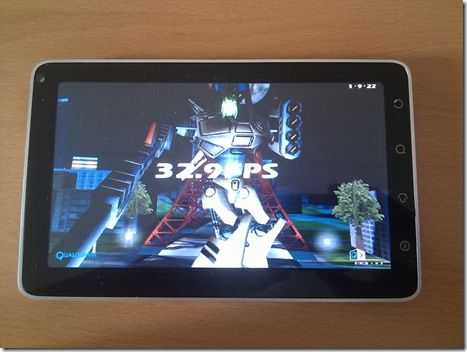At the beginning of the year, if you would have told me that, by the summer, there would be a dozen different Android tablets available for order from reliable, first tier manufacturers, I would have told you to get outta town. We were likely all desensitized to the constant stream of news that seemingly had the same message: “Company X announced the Y Tablet today. It features blah-blah-blah-blah-blah-blah-blah. No information was released on a launch date or pricing.” It had gotten to the point that I immediately went to the bottom of any announcement of a tablet-device, and if it had the standard blurb about no launch date or word on pricing, I did not read the article.
Read the full storyTag Archive | "android 2.2"
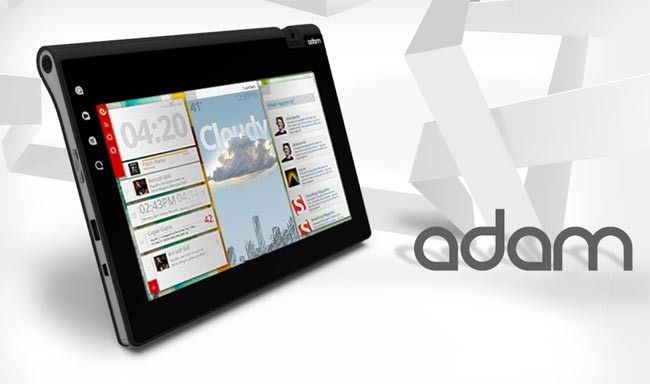
Notion Ink Adam Reviewed, Android 2.3 and Other Changes Coming in an Update
Posted on 09 May 2011
The Notion Ink Adam [tracking page] may have wow-ed most at the CES 2011 but the proof is always in the pudding once the tablet is truly unleashed for general consumption in the consumer market.
It took a little while, but Engadget’s Sean Hollister managed to get his hands on a unit and wrote a good review on the Adam. From the review feedback, the Adam may not have lived up to expectations as being a perfect technology marriage of form and functionality.
Let’s explore the Adam, shall we?
The Adam has a unique form factor which differentiates it from most uniformly slim-line tablets it has a rather rounded bulky rear (pictured below).
Some may find this rather unsightly but from an ergonomic’s perspective, I think this is a good design as it may allow a good one handed grip when using the Adam in a portrait mode. This is especially important as the Adam weighs in at rather hefty 1.6 pounds and therefore having a good grip whilst single-handedly using it is a must. Sean mentions the cylindrical rear holding a pair of stereo speakers as well as three-cell battery which makes me wonder if the unit may be possibly top heavy (or bottom depending on which direction you hold it!) when held in a landscape position.
The reviewer wasn’t impressed with the four capacitive touch buttons (pictured above) which are neither backlit or possess haptic feedback.
One thing the Adam has going for it is the plethora of ports, from two full-sized USB ports as well as a HDMI slot that is capable of 1080p display mirroring. I feel that this is a key feature that distinguishes the Adam as a tablet meant as a serious productivity workhorse or mobile home-theater from a tablet meant soley as a sofa surfing device. I cannot tell you how many times I have been frustrated when someone at work hands me a USB thumb drive and I am unable to transfer files via USB to my Dell Streak 5 inch nor my Samsung Galaxy Tab 7 inch!
Another feature which had us all eagerly anticipating the arrival of the Adam is the famed Pixel Qi display. Unfortunately, the reviewer found that the Adam’s 1024×600 resolution Pixel Qi display was not good, describing the display’s viewing angles as “terrible inch with the colors being “a bit washed out inch. A saving grace is that the reviewer found the Adam’s Pixel Qi’s reflective mode working well and once the screen backlit is switched off, the screen is viewable even outdoors and conserved hours of battery life.
The reviewer also found the 3.2MP camera’s picture taking capabilities to be unimpressive, describing issues with the autofocus as well as over exposed pictures. Note that the camera is able to swivel front to rear, vice versa.
Under the hood, the Adam sports a dual-core 1Ghz Tegra 250 and the reviewer has found no issues with general performance of the device.
From an operating system perspective, the Adam runs Android 2.2 aka “Froyo inch but Notion Ink designed its own user interface known as the Eden UI that provides an innovative-looking PanelView (pictured above) that allows the multiple applications to be open and active on the same homescreen.
Though the hardware issues can’t be fixed through a software update, Notion Ink will be releasing a significant update to the Adam’s software. The update will contain the following:
- a new e-book client
- a new Browser (the name of the book client and browser will be released in a separate blog next week)
- updated Kernel
- optimally over-clocked Tegra
- Gingerbread 2.3
- lots of usability Issues resolved
- new multi-tasking environment (easier way to manage all tabs and applications)
- Chords Music Library and Player (Simple and straight Music Player)
- Video Library and Player
- DSP support, so now equalizer will work in better way. Soon we are adding more bass boost in the speakers as well (not a part of this update).
- Flash pre-installed
- and more
Readers may wonder why the update to Android Gingerbread 2.3 instead of Honeycomb 3.0, the reason being that Google only releases the Honeycomb source code to a selected few partners at this point and Notion Ink isn’t one of them.
The release date of the update is still unannounced at this stage.
Notion has certainly challenged the tablet manufacturer’s norm by designing a tablet that has the capability of replacing a desktop thanks to USB peripheral support. I certainly hope that it is able to rectify the hardware quality issues and deliver the software update in a timely manner.
Here’s Notion Ink Adam Picture Gallery thanks to Engadget!
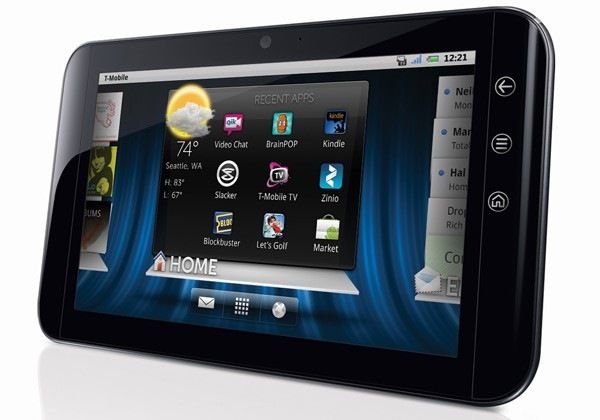
Dell Streak 7. First Reviews Available. Is It Worth $450?
Posted on 01 February 2011
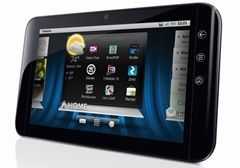 $450 for a 3G-enabled (HSPA+ no less) 7 inch tablet on one of the fastest ARM-based processing platforms there is with hardened capacitive multitouch screen a 5mp auto-focus camera and Android 2.2 isn’t a bad price at all. It beats the Galaxy Tab on price and performance, that’s for sure. The only problem is that, as always, you have to look for the showstoppers. With the Dell Streak there a number to consider.
$450 for a 3G-enabled (HSPA+ no less) 7 inch tablet on one of the fastest ARM-based processing platforms there is with hardened capacitive multitouch screen a 5mp auto-focus camera and Android 2.2 isn’t a bad price at all. It beats the Galaxy Tab on price and performance, that’s for sure. The only problem is that, as always, you have to look for the showstoppers. With the Dell Streak there a number to consider.
Battery life There are reports coming in from reviewers that the Dell Streak 7 isn’t making it though a day under normal (reviewer) usage. Note that the battery is only 10Wh (The Galaxy Tab has a 15Wh battery)
Android 2.2 Android 2.3 is out and the Tablet-focused 3.0 is coming up soon. In fact, Android 3.0 is the first to be optimised for a multi-core processor so there’s a mis-match here.
Screen quality 800×480 is great for gaming, videos, navigation and many other functions but when it comes to reading, the lack of resolution is noticeable. Not only that but there are reports that the screen brightness isn’t as good.
On one hand, the Galaxy Tab can get a little sluggish so it would be nice to have something with more ooomph. On the other hand, it that means having to charge twice every 24 hrs, it’s not worth the bother in my opinion, even if it saves $50-$100
Maybe a Wifi-only version with a lower-price would be more interesting to people?
Check out all the reviews that are now listed in our tracking page which also includes a comparable products. We’re liking the look of that Eee Pad Memo right now!
| Dell Streak 7 Review (Crunchgear) | 01/02/11 |
| Dell Streak 7 Review (ZDNet) | 01/02/11 |
| Dell Streak 7 Review (Slashgear) | 01/02/11 |
| Dell Streak 7 Review (JK On The Run) | 01/02/11 |
| Dell Streak 7 Review (Laptopmag) | 01/02/11 |
| Dell Streak 7 Review (Engadget) | 01/02/11 |
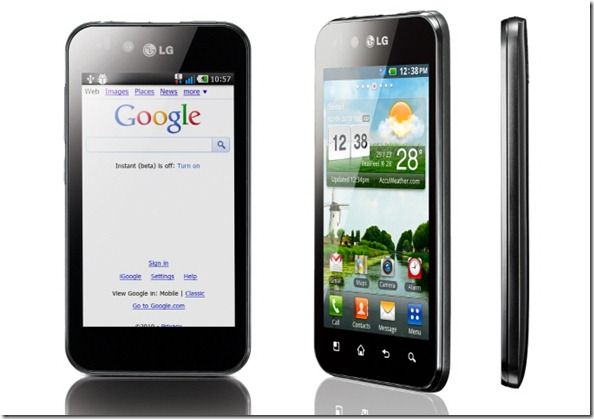
LG Gets Official with the Optimus Black
Posted on 05 January 2011
Today at CES LG have gone official with their latest Android smartphone. It sports a 4-inch NOVA display which LG claim is “the brightest, clearest and most readable inch mobile screen available, promising to be extremely bright while at the same time being more power efficient than both LCD and AMOLED mobile screens.
If the name doesn’t give it away, the phone has a black finish and LG also claims it’s the worlds slimmest mobile phone at an impressive 9.2 mm, which is 0.1 mm thinner than Apple’s iPhone 4. It will be interesting to see if it can still claim to be the worlds slimmest phone by the end of CES.
The Optimus Black seems very similar to the LG Optimus 2X that was announced late last year, however the LG press release gives no indication on what processor is at the heart of this phone leaving me feeling sceptical on whether this device is Tegra 2 powered like the Optimus 2X.
LG say this is also the worlds first ‘WiFi-Direct’ phone which is a very interesting technology that allows direct data transfers between enabled devices.
The Optimus Black will launch with Android 2.2 preinstalled however LG plan on updating the device to Gingerbread which they claim will also provide higher quality video calling through it’s 2 megapixel front facing camera.
This appears to be a very promising phone and I look forward to a hands on when it launches globally in the first half of 2011.
Source: LG
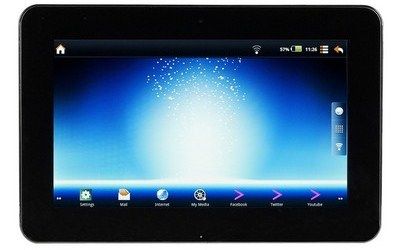
Advent Vega; Sold Out.
Posted on 13 December 2010
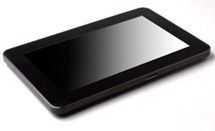 We’ve already had an Advent Vega [tracking page] order cancelled due to high demand but its looking increasing like new stock isn’t going to arrive before Christmas.
We’ve already had an Advent Vega [tracking page] order cancelled due to high demand but its looking increasing like new stock isn’t going to arrive before Christmas.
Its no surprise really, at £250 its cheaper than many of the alternatives like the Viewsonic Viewpad 7 (£400) and the Samsung Galaxy Tab (£449) and yet for your money you still get a good specification. With Android 2.2, nVidia Tegra 2 dual-core 1GHz CPU, WiFi, 512MB RAM, 4GB expandable microSD storage and a multi-touch capacitive 10.1 inch display, its certainly no slouch.
The early reviews are as we expected, good hardware but the lack of Google applications and access to the market leave the device feeling bare. I’ve also seen several mentions of user interface lag and keyboard freezes which result in several letters being pressed instead of just the one.
Luckily both of the above can be remedied with a little work and the help of MoDaCo.
Until we can finally get hold of a unit for review ourselves you can keep your need for more information in check with the following reviews;
The gallery and tracking page are also now online so you can compare the Advent with its competition and if your interested in the Vega, follow @adventvega for the latest information and stock updates.

Samsung Galaxy Tab Available – Hands-On Video, Impressions: ‘Geil!’
Posted on 12 October 2010
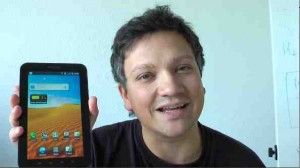 Interesting news from Samsung Germany as they issued a press release yesterday stating that the Samsung Galaxy Tab [specifications] is available ‘from now.’ (Via Netbooknews)
Interesting news from Samsung Germany as they issued a press release yesterday stating that the Samsung Galaxy Tab [specifications] is available ‘from now.’ (Via Netbooknews)
We hadn”t heard of any immediate availability and the price is still a recommended 799 although street prices, as predicted have hit 650 Euro.
Checking the blogs though shows that our local friends at AndroidPIT managing to get hold of a Tab. Lucky boys! The first impressions are: ‘Geil’ which is somewhere between ‘hot’ and ‘cool’ – both in a very positive way!
We’re wondering whether to drop in on them at the weekend and buy them a beer!
Check out the video from AndroidPIT below. Article translation here.
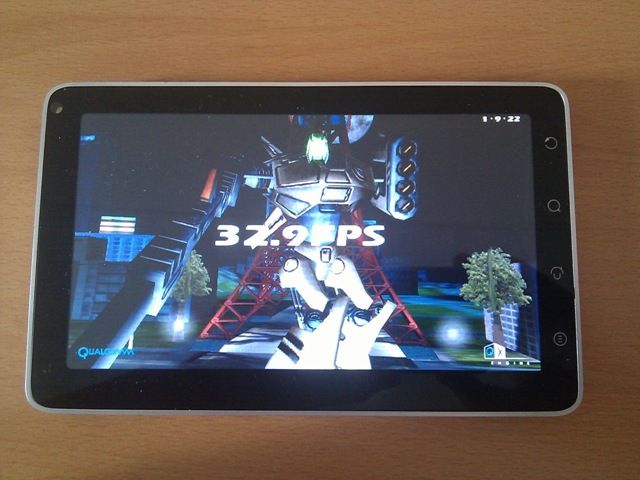
CSL Spice Mi700 Android 2.2 Tablet Review Pt2 (Software)
Posted on 12 October 2010
Foreword: Many, many thanks to Er Lern out in Malaysia for sending us this review of the CSL Mi700 tablet before posting it on his own blog. Er will be bringing part 3 of the review soon. Make sure you follow Er on Twitter.
Readers might notice that the Mi700 is the same as the Camangi FM600, the OlivePad and the Viewsonic Viewpad 7 that should be launching soon. (all product details here with links and videos) For a 7 inch tablet with 3G, voice, GPS, capacitive touchscreen and Android 2.2, this is shaping up to be a really nice product. The pricing should be competitive (we’re hearing 399 Euros for the Viewpad 7 with 3G included) so this is one review to read carefuly. Take it away with Part 2, Er Lern….
See Full Mi700 Specifications here
Okay, the first part was the easy part. Now comes the hard part… the software aspect of the DroidPad. First of all, let us remind ourselves that this tablet is running on Froyo, Android 2.2. Take note that this is based on my full week’s experience of the tablet. In the week that has passed, I have already installed about 30 programs (mostly free and some paid). Not only that, I have transfered over 2GB worth of media files. All in all, this should be a more balanced review and not just a ‘first look’ at the device. Onwards with the review:
Performance
1. Mflops: Mflops basically stands for Million FLoating point OPerations per second. It is a calculation intensive test where the higher the numbers, the better. Using Linpack for Android, the device scored 7.5 Mflops on average in 11 seconds. This is considered reasonable when we take into account the CPU which is an MSM7227 600Mhz (a slight upgrade from the older, and much despised, MSM7201A 528Mhz). Comparing with similar CPU devices, we find that the HTC Aria scores 5.2 Mflops with a slight overclock to 806Mhz while LG Ally/Aloha scores 9.1 Mflops with 30% overclock and HTC Legend scores 9.8 Mflops with 37% overclock. Certainly the Mi700 can hold its own.
2. BenchmarkPi: Basically the time it takes to calculate Pi. The lower the better. The DroidPad scores an average of about 2,800 milliseconds, not too bad considering a Snapdragon processor averages about around 2,000 milliseconds.
3. Neocore: This is an OpenGL-ES 1.1 graphics performance benchmark test. The DroidPad’s MSM7227 actually shares the same GPU as the Snapdragon; Adreno. I am pretty surprised by the outcome, since the DroidPad performed slightly better than my HTC HD2 Android (using a Snapdragon CPU and running Froyo) with an average of 32fps while the latter only a paltry 30fps.
4. Boot Time
This was timed from the moment the power switch was pressed and slight vibration felt, until the time when everything was loaded and lock screen appeared (SD card finished mounted). The total average boot time was approximately 60 seconds (1 minute). Frankly, I think this is acceptable although it should be improved. Somewhere around 45 seconds would be good.
Home Screen Performance
1. Custom Shortcuts: This is the version that came with the DroidPad. It looks very much like Android 2.2 stock, but with the added difference of a strip to the left hand of the tablet screen which contains 4 distinct icons. The top most is for mails, followed by an e-book reader, media and social networking shortcuts. I found this to be a redundant add-on since the system already allows users to put on widgets of their own. However, I suspect that this is not part of CSL’s customization but Foxconn’s, since the same shortcuts strip is seen in the similar devices shown elsewhere (Camangi Webstation and Viewpad 7). I have to say that they were not efficient to use at all. I found that the mail program took time to load, and was laggy. Same also for the media player. To its credit, it had a ‘cover flow’ type interface, but again, it was laggy and I kept selecting the wrong song since it either went too far ahead or too short before the one I wanted. Same goes for the social networking program which incorporates Facebook and Twitter. They look too much like the old web 1.0 interface.
2. Scrolling: The saving grace comes in the parts that are untouched, mainly the apps drawer. There is no lag in using the apps drawer and it was all smooth no matter how many apps I had installed and have open at any one time. Scrolling between screens were slightly laggy on the stock version. I have no idea why, but it just is. Not noticeable if you have never used another Android device, but still, it is just a little annoyance that I wished they would have cleaned up a bit more before shipping the devices out. As a matter of comparison, it felt slightly jerkier than using CyanogenMod 6 (Froyo) on a G1/HTC Dream phone.

3. Resolution: Because the tablet shares the same resolution as many of the more advanced Android devices, the grid that is available for widgets remains 4 by 4 (in all, you can put up to 16 application shortcuts on a single screen). The stock version only allows 3 home screens. If there is one glaring weakness of the Mi700, it would be the resolution size. Even though we have a considerably large screen, stretching an 800 by 480 resolution on it wastes that spacious capacity. What we get is the same 4 by 4 grid available, which translates to widgets getting blown up double the size, making them look awkward at best and ugly at worst! And the result is big spaces between each widget or shortcut; wasted space! I think if it was using the conventional netbook resolution of 1,024 by 600 pixels, this would have made the DroidPad near perfect! For some people, this might be a dealbreaker. Certainly, it would improve on the utility of the home screen.
4. Live Wallpaper: One of the most loved features of Android 2.0+ is the introduction of live wallpapers. Basically these are your normal wallpapers plus added interactivity and animation that adds to the level of ‘fun’ and ‘zazziness’ of a phone OS experience. I found that the DroidPad could handle all live wallpapers fine, without any hitch in the interface. The only problem stems when you are coming back to ‘home’ from a memory intensive application; it takes time for the live wallpaper to reload. That is the only problem that I have encountered, and this is nothing to do with the device, but to the software itself.
5. Alternative (LauncherPro): Personally, I ditched the stock home screen launcher and installed LauncherPro from the market. Buy it. It is worth it. This made the home screen less of a bore for me, as I am able to reclaim the whole screen for myself (no pesky strip to mess with the symmetry), and have up to 7 home screens. Not only that, but LauncherPro allows the user to heavily customise the feel of the home screen. The transitions between screens were smooth and flawless. The app drawer opened speedily and scrolling is smooth when there are only a few apps installed. However, after more than 25 apps in the drawer, I notice that it does tend to lag just a little. But besides that, there is nothing else that I would recommend for speedy experience. LauncherPro also allows the user to change the size of the widgets on the screen to suit their wants. Resizing helps to save space, especially when there is a need to put as many widgets as possible into one single screen.
One last reason to change the home screen launcher to the new one? The stock version only allows the user to use the tablet in landscape mode. This limitation is very frustrating upon me because of my tendency to do work in portrait mode. Thankfully, LauncherPro allows for this.
Note that the more active widgets (auto update) the user uses on the home screens, the slower the UI performance will be. However, based on my usage, I found that the 512MB RAM is well worth its size; I rarely felt that the screen was lagging because of the many applications that are open and the widgets that are actively updating itself.
6. Inputs – Virtual Keyboard, Accelerometer and Touch
I have not much problems with the touch sensitivity of the screen (as mentioned in part 1). However, I notice that in some situations, my swipes are not registered at all. Somehow, at times, I notice that some applications cannot seem to register my swipes and touches. A good example would be in the app drawer (stock version); swiping using my left thumb would result in absolutely smooth scrolling. However, if I were to use my right thumb to do the same gesture or swiping motion, there would be no response from the application. Strange, but these small ‘problems’ appear almost randomly throughout the week.
The accelerometer worked well on games in general. The user is given the option to calibrate the accelerometer whenever the necessity arises. I could easily play the game “Labyrinth” and see how accurate the motions were. However, it is to be noted that the game “Abduction” was problematic to play, as the accelerometer just went haywire.
The virtual keyboard provided as default is the stock Android virtual keyboard. The keys are well spaced on the tablet, but it makes it a bit hard to thumb type, since our fingers will not be able to stretch that far out. Nevertheless, if the tablet is rested on a surface, typing is much faster and more accurate. It is unfortunate that the keyboard does not respond as fast as the iPhone’s; there is a very slight delay and this is more noticeable when the haptic feedback is turned on. I do not think I can type fast using the stock virtual keyboard provided. As an alternative, I used Smart Keyboard Pro (paid version) which is much faster in response, and supports multi-touch points.
Applications
The best news concerning apps on the DroidPad is the access to Google’s Marketplace. Depending on the country you are in, you will be able to either access only free apps (this limitation applies for places like Malaysia) or both free and paid apps (only selected countries). In this section, I will just give an overview of the type of performance experienced in using various types of applications on the DroidPad.
1. E-reader

The DroidPad comes with the popular Android e-book reader Aldiko installed in the system. Aldiko is the best reader that allows for offline reading, unlike other reader apps like Kindle. What makes Aldiko popular stems from its intuitive graphical user interface and ease of transitioning between pages. When the pages are rendered on the DroidPad’s 7″ screen, I have to admit that the words are so easy to read. There is no more need to squint or to move the device closer to us like other smaller devices. The 7″ inch display allows for more words to be fitted into a single page. Though the resolution for such a device might be low, yet I did not find myself struggling to focus on the text. This is definitely one of the plus points of having a device with ample screen size. Just like LauncherPro, the user is able to customise the way they read using Aldiko, till they have satisfied their own requirement.
2. Video Player
The DroidPad’s player only plays a very limited type of video formats (mp4 being the chief of them). I find the video player to be too simplistic. In order to test the video rendering capabilities of the DroidPad, I installed two video players; Rockplayer and Yxplayer. Both of the players could play a common .avi (dvix, xvid) file smoothly. The file played had a resolution of 624 by 352 pixels. However, the playback was not so smooth when playing a true HD 1080 video. On Yxplayer, the result was choppy at best. I tested MKV files and both players failed to play it adequately.
One of the missed opportunities for this device is to provide adequate coverage on video file formats that it can play. This is more surprising considering that this device has a graphical processing unit. Here’s hoping for a better update for the customers, incorporating these suggestions.
3. Social Networking Apps
There are many in the market for free from which you can choose from. I have to confess that it is quite a joy to see a substantial amount of updates without having to zoom in and to subsequently zoom out from using the device. Sharing news, photos and other media are as provided under Android 2.2. Everything works efficiently (minimal battery usage). There are no real surprises here.
4. Games
Most games played well using the MSM7227 chip. The only thing to be careful is to know the limits of the CPU; cannot play certain emulators that are made for Snapdragon or Cortex chips. Zenonia (something like Legend of Zelda) played on the tablet at full screen. The controls and the performance of the game was really good, without any lag. Besides that, I tested a few emulators on the DroidPad. It seems that all emulators (e.g. Gameboid, Gensoid) can work well with the device, except for the PSX emulation. The screen size really helps to make the game more immersive for the most part.
5. Voice Search
This is a Google app that is integrated in Android 2.2. To enable this search, one needs to only hold onto the “search” button for 1 full second, and the app will start to receive the voice input from the device’s microphone. It works well enough for me; I spoke the words, “Wikipedia” and “Great wall of China”. The results returned was almost instantaneous, clocking in at 1 second. I am really impressed with this.
6. GPS Navigation
The device comes with 2 maps that can utilise the internal GPS; MapKing and Google Maps. The former is included as part of the DroidPad package. Malaysian buyers get to use MapKing products for free using the 1-year subscription that they offered. Somehow MapKing (from what I can see) is not a good GPS application. It is definitely not an attractive package (unlike Garmin). The only other option for me at the moment is to use Google Maps. Unfortunately, Google Maps can only be used with a data connection (either 3G or wifi). I found that the GPS fix was very fast on Google Maps, within a few seconds (with AGPS turned on and while I was in the house and not open air).
7. Music Player
The stock player is the same boring app that has not seen much changes since Android 1.6. There was no problem in detecting my whole library of songs which I transferred via USB from my desktop. I installed Mortplayer (free) from the Market and used the widget to play songs when I am on the go. Surprisingly, the widget requires a few taps before it registers my touch. Once the app starts, it works smoothly with not much delays.
8. CSL Custom Apps
 You might be wondering what type of customization CSL made for the devices. There are a few that is quite obvious from the apps drawer; Blueberry Messenger, Blueberry Store, CSL Azan Alarm (for muslims) and CSL Fun Club. All these apps surprisingly (except 1) are web-based; the icons only bringing up a shortcut to the respective website. The Blueberry Messenger is their attempt to have an IM (Instant Messaging) app that encompass as many social sites as possible. Blueberry Store is their web-based online store, while the CSL Fun Club is just a sort of gateway for people to explore their offerings given to potential customers. The only useful application that I could observe was CSL Azan Alarm… basically it is an alarm clock to remind the user of their obligations for worship. I found that the work done on these apps were minimal and therefore quite deplorable.
You might be wondering what type of customization CSL made for the devices. There are a few that is quite obvious from the apps drawer; Blueberry Messenger, Blueberry Store, CSL Azan Alarm (for muslims) and CSL Fun Club. All these apps surprisingly (except 1) are web-based; the icons only bringing up a shortcut to the respective website. The Blueberry Messenger is their attempt to have an IM (Instant Messaging) app that encompass as many social sites as possible. Blueberry Store is their web-based online store, while the CSL Fun Club is just a sort of gateway for people to explore their offerings given to potential customers. The only useful application that I could observe was CSL Azan Alarm… basically it is an alarm clock to remind the user of their obligations for worship. I found that the work done on these apps were minimal and therefore quite deplorable.
Multitasking
 Multitasking works with these apps. I am able to switch on the music player while surfing and reading an e-book from Aldiko. Again, this is the benefit of having ample RAM size, which I am glad this device have in spades! There is no need for the application to reload all the data all over again when you are switching between applications. I tried to test the limit of its multitasking by using several memory intensive applications and switching between them to see whether they needed to be reloaded (a sign of insufficient memory). I opened Engadget’s app, Astro file manager, Aldiko, CadreBible, Market, Music, Browser (to a specific website that is graphically intensive), Angry Bird Lite (the game) and Mortplayer. It is surprising, but I actually had NO problems switching from one to the other. They were all still working without reloading the contents. I am thoroughly impressed because this is one of the aspects that are important in daily usage; worrying over memory management (I had a G1/HTC Dream and it was always a horror to switch applications).
Multitasking works with these apps. I am able to switch on the music player while surfing and reading an e-book from Aldiko. Again, this is the benefit of having ample RAM size, which I am glad this device have in spades! There is no need for the application to reload all the data all over again when you are switching between applications. I tried to test the limit of its multitasking by using several memory intensive applications and switching between them to see whether they needed to be reloaded (a sign of insufficient memory). I opened Engadget’s app, Astro file manager, Aldiko, CadreBible, Market, Music, Browser (to a specific website that is graphically intensive), Angry Bird Lite (the game) and Mortplayer. It is surprising, but I actually had NO problems switching from one to the other. They were all still working without reloading the contents. I am thoroughly impressed because this is one of the aspects that are important in daily usage; worrying over memory management (I had a G1/HTC Dream and it was always a horror to switch applications).
Battery Life
According to the specifications, the DroidPad houses a 3,240mAh Li-Pol battery. I have done some test on this and have found some approximation of how long the battery can last. For simple usage, some surfing, checking of mails, typing, music and reading, you can easily squeeze nearly a day’s life from it. For heavy usage, where the above are done more frequently, then you can squeeze probably 7 hours.
The playing of media files will drain the battery faster than surfing does. To test how durable is a single charge (from the wall charger and not from desktop) I performed the following things: I played a 20 minute divx clip for 7 times while at the same time playing music from Mortplayer (continuously) and also switching on the display to the brightest setting and watch the battery drain away. The test started at 10am and when the device powered down by itself, it was at 3.30pm. Based on my simple test, the device lasted for 5.5 hours of heavy media usage!
Take note: charging the battery takes time, even when it is done from the wall charger. It takes approximately 3 hours plus.
Flash Implementation
Unfortunately, for Adobe Flash 10.1 to run, the minimum requirement is for an Arm7 chipset, which the DroidPad does not have (it has only an Arm11 chip). Well, do not worry much, since the iPad also does not have this and people are well content with it. For small Flash usage, there are always alternatives that can be used on the DroidPad. A good substitute for websurfing Flash enabled sites is by using Dolphin HD browser. It is quite fast and shows off some Flash contents (I have not use it extensively). This is a limitation that is not due to the software, but rather the hardware of the device.
Development
To round up this side concerning the software performance of the DroidPad, I would like to say that there are some other concerns that I would like to put forth. The main one being, there are a lot of ways that the DroidPad can be made more useful and attractive, and all these involves having more developers to thinker on the software itself. I can only imagine getting Cyanogenmod 6 working on this device, thereby solving any buggy code or inefficient coding. Many of the problems detected in this review can be solved. Unfortunately, in order to do that, we need to get ‘root access’ on the device. Something that is for now elusive.
I cannot even seem to get ADB (Android Debug Bridge) to work with the device! I found that even the “terminal emulator” that is ‘installed’ on the device cannot be accessed by users. I have to install Android Command Shell app to use command line actions. It makes me wonder whether the DroidPad and CSL is open to the developers community? For certainly, they can gain so much more when the developers are collaborating to extend the lifespan of this device.
From my initial discussions with them over the matter of open development, they have shown some interest in pursuing this, especially in line with the massive third-party independent developers for the first batch of Android phones. We can only hope that CSL will show their support for such endeavour instead of just seeing this as a product.
The last part of this review will cover the final parts of the DroidPad: Camera, Phone Functionality and Other Uses.
[Again, many thanks to Er Lern out in Malaysia for sending us this review of the CSL Mi700 tablet before posting it on his own blog. Er will be bringing part 3 of the review soon. Make sure you follow Er on Twitter – Chippy]

Archos 101 – Hands-On and Overview
Posted on 05 September 2010
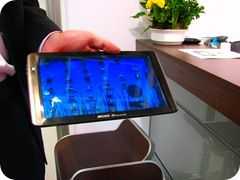 10” consumer tablets don’t seem to make much sense to me. I can’t think of any scenarios that need that much space apart from newspaper and magazine typesetting. Sure, a netbook running a multi-windowing OS could use a whole lot more space but when I look at Android tablets that show one window at a time through apps that were created for a maximum 5” screen I have a problem. Having said that, there’s a special feeling one gets when touching and moving huge web pages smoothly across such an area when the screen is only 50cm from your face. Video becomes more immersive too, especially when it’s good quality. The challenge is to create a large screen at a very low weight. A low price always helps too!
10” consumer tablets don’t seem to make much sense to me. I can’t think of any scenarios that need that much space apart from newspaper and magazine typesetting. Sure, a netbook running a multi-windowing OS could use a whole lot more space but when I look at Android tablets that show one window at a time through apps that were created for a maximum 5” screen I have a problem. Having said that, there’s a special feeling one gets when touching and moving huge web pages smoothly across such an area when the screen is only 50cm from your face. Video becomes more immersive too, especially when it’s good quality. The challenge is to create a large screen at a very low weight. A low price always helps too!
The Archos 101 [specifications and details] does 10” in 480gm. That’s an impressive size/weight ratio and when you add in a price of just $300 you have to agree that Archos have set out in the right direction with the 101.
Its almost no surprise that the Archos 101 doesn’t include Google Applications but there’s a lot more to get excited about. A full range of codec support, USB host (with full-size USB port) and a good level of processing power. It looks good too which is important when you’re aiming for as many coffee tables as possible.
Personally I still think that 7” makes more sense for a single-window experience but if you’re looking for an impressive gift for yourself, big is always better right?
Full specifications are in the database, a Chippy hands-on is shown below and we hope to be testing this out further as soon as we can. Note that the test devices at IFA were all running Android 2.1 Android 2.2 will, without a doubt, speed this up to very acceptable levels.
 |
| |||
 |
| |||
 |
| |||
 |
| |||
 |
| |||
 |
| |||
 |
| |||
 |
| |||
 |
| |||
 |
|


